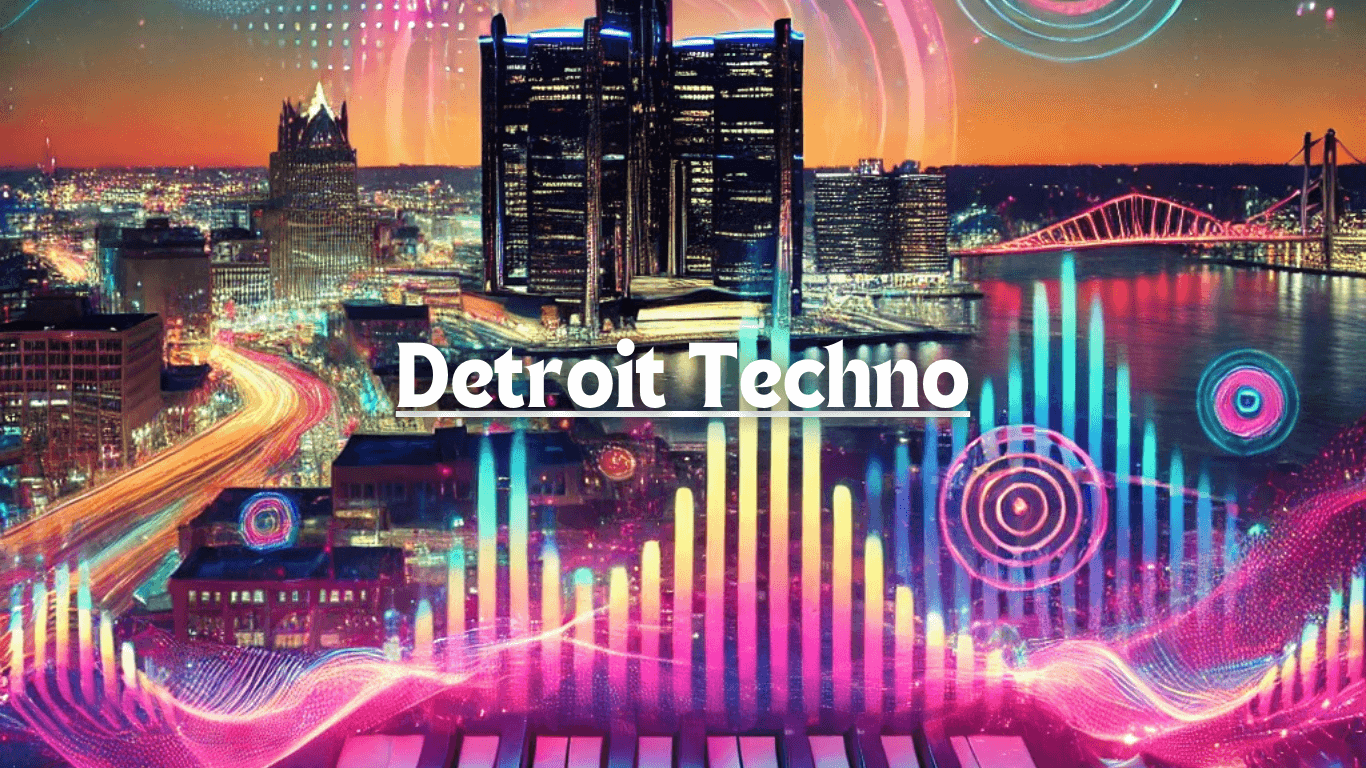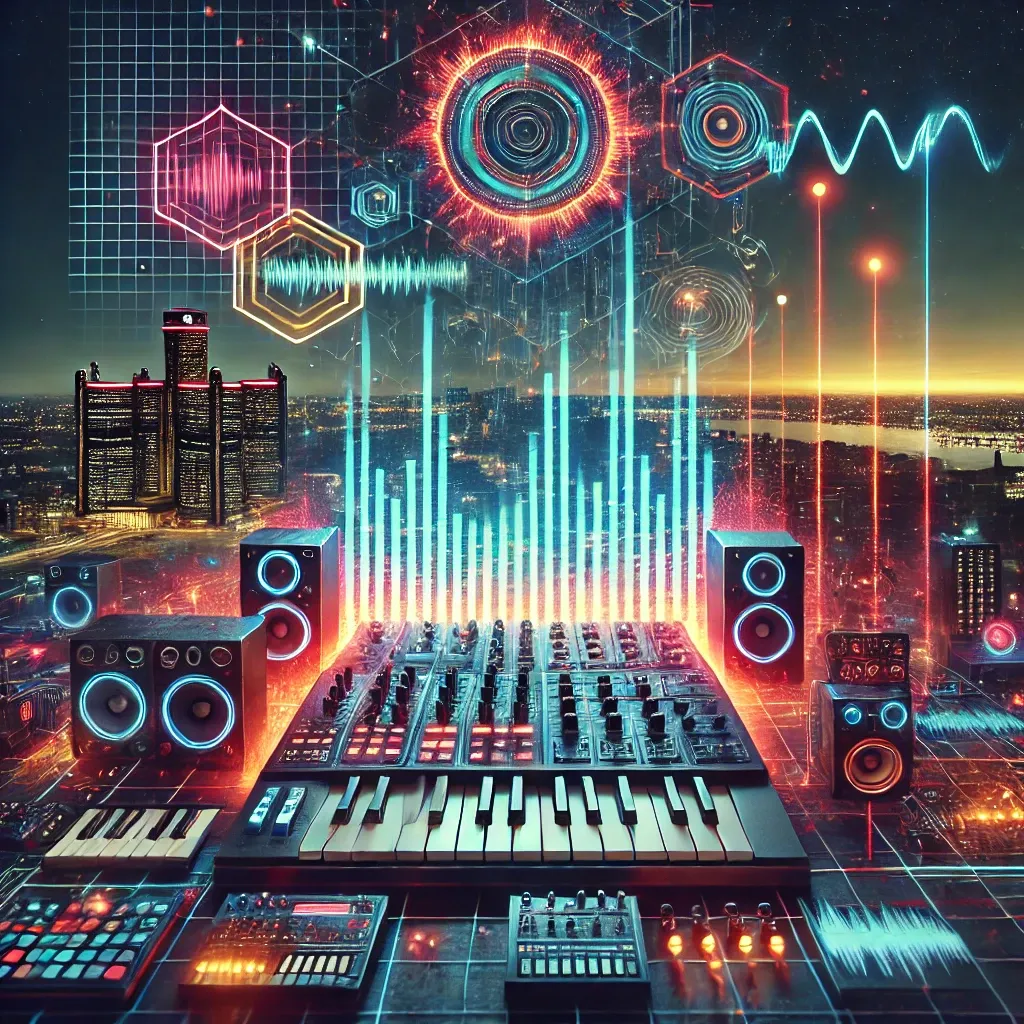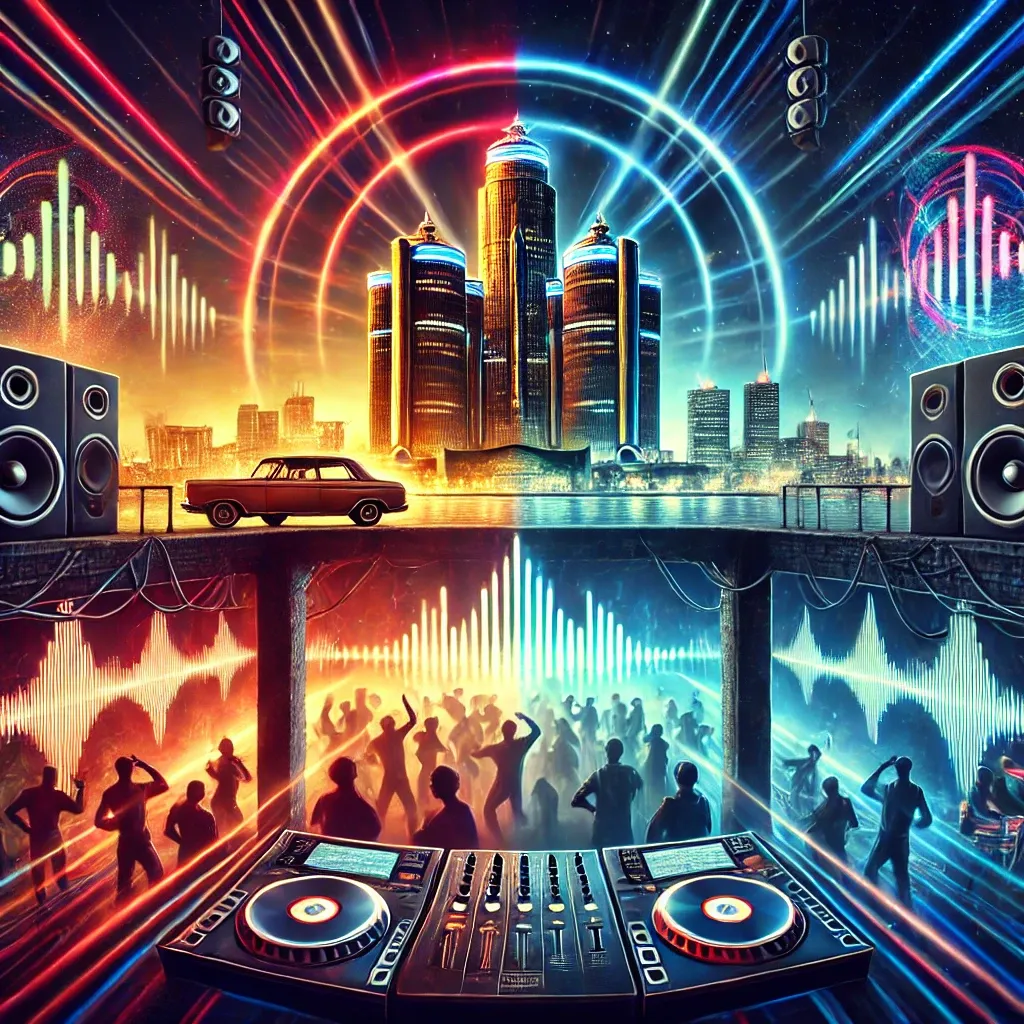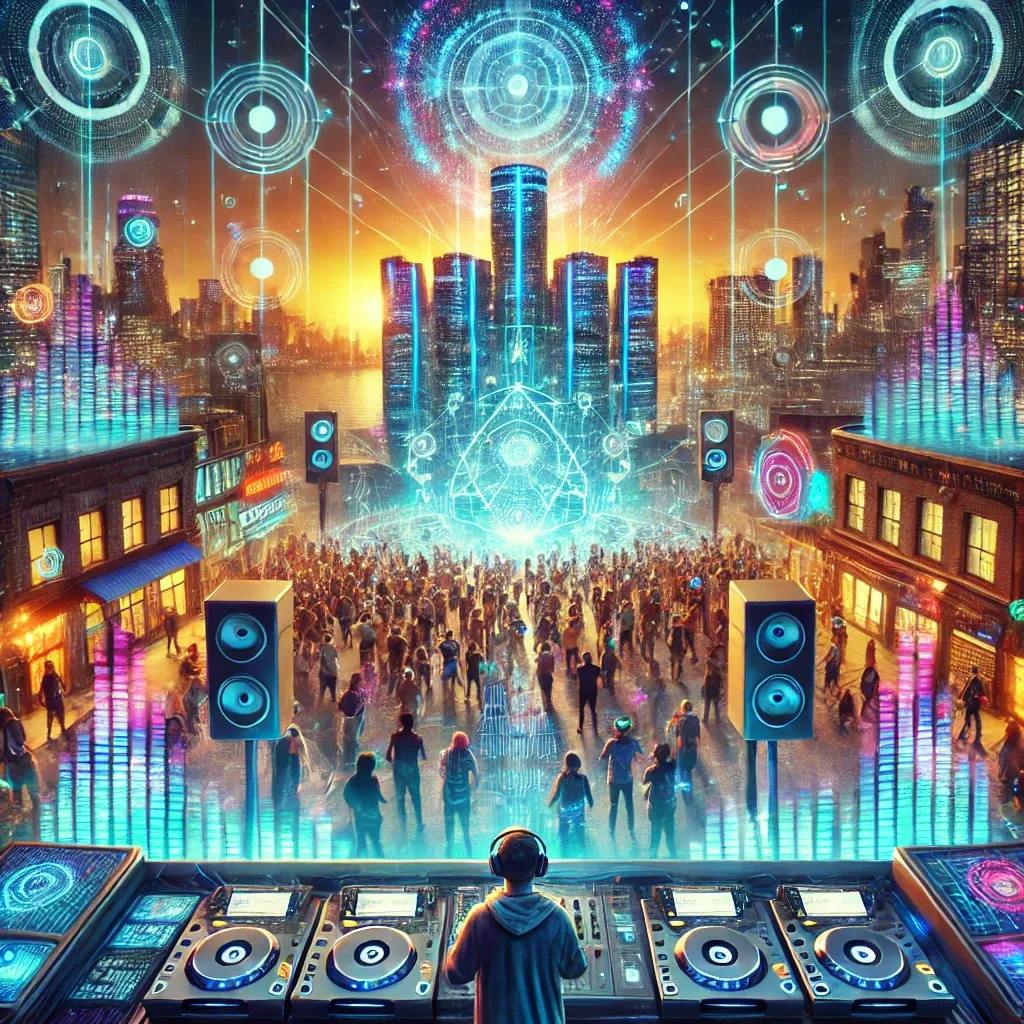The History and Impact of Detroit Techno
Discover the roots of Detroit techno, its pioneers, and its global legacy. From the Belleville Three to Afrofuturism, explore this genre's revolutionary impact.

Last Updated: December 21, 2024 (21.12.2024)
In the 1980s, a groundbreaking sound emerged from the heart of Detroit, Michigan. It was a sound that transformed electronic music and inspired generations of artists worldwide. This revolutionary genre, known as Detroit techno, combined the mechanical precision of electronic instruments with the soulful grooves rooted in African-American music, creating a unique and timeless legacy. Its influence extended far beyond Detroit, shaping the electronic music culture in Berlin, where it became a central part of the city’s club scene and techno movement.
Detroit techno was born in a city grappling with economic decline and social challenges. Following the downturn of the auto industry, Detroiters faced adversity. Amid this struggle, a creative spark ignited, showcasing how technology could breathe life into music. This innovative sound became a voice for the community’s resilience, blending their struggles and aspirations into something entirely new.
The Belleville Three: Pioneers of Detroit Techno
At the forefront of the Detroit techno movement were three friends from Belleville, Michigan: Juan Atkins, Derrick May, and Kevin Saunderson, collectively known as the Belleville Three. Their innovative approach laid the foundation for one of the most influential genres of electronic music.

Juan Atkins, often referred to as the “Godfather of Techno“, debuted in 1983 with Cybotron’s iconic track “Clear“. Soon after, Derrick May and Kevin Saunderson contributed their unique sounds, blending futuristic, science-fiction-inspired elements with the raw energy of Detroit’s urban reality.
More on The Belleville Three
- Juan Atkins, often referred to as the “Godfather of Techno“, introduced futuristic themes with tracks like “Clear” and pioneered the use of synthesizers to create groundbreaking sounds.
- Derrick May, through tracks like “Strings of Life“, brought a sense of emotion and melody to techno, blending soulful influences with machine-like precision.
- Kevin Saunderson, with his project Inner City, bridging the gap between techno and house music, creating commercially successful hits like “Good Life” and “Big Fun“, which brought Detroit techno to mainstream audiences.
Musical Elements of Detroit Techno
Detroit techno is characterized by its use of electronic instruments, particularly synthesizers and drum machines, creating hypnotic rhythms and layered, intricate melodies. Typically ranging between 120 and 135 BPM, its fast tempo instills an electrifying sense of urgency.

A defining feature of the genre is its syncopated, funky basslines, often produced with analog synthesizers, which deliver a warm, organic sound. This contrasts beautifully with the mechanical precision of the drum machines, while futuristic, sci-fi-inspired samples add an otherworldly dimension. Early techno producers often embraced the limitations of hardware, using them creatively to push sonic boundaries and invent a sound unique to Detroit.
Afro-futurism and The Politics of Detroit Techno
Deeply rooted in the African-American experience, Detroit techno embodies the spirit of Afro-futurism, a philosophy that reimagines futures for Black people through the lens of technology and creativity. Techno artists crafted futuristic soundscapes that reflected both the cultural richness of Detroit and the aspirations for a better future.

Tracks like “No UFO’s” by Juan Atkins and “Goodbye Kiss” by Eddie Fowlkes reflected the social and economic struggles of Detroit while envisioning hope and resilience. By addressing issues like poverty, racism, and urban decay, these artists used techno as a medium for social commentary and a vision for an equitable future.
In contemporary times, Detroit techno has influenced broader discussions around technology and race, inspiring modern artists and thinkers to explore how technological advancements intersect with cultural identity and social equity. This legacy continues to resonate in movements advocating for diversity and inclusion within the global electronic music scene.
The Spread of Detroit Techno: From Underground to Mainstream
Initially thriving in underground circles, Detroit techno was distributed through independent labels and sold directly by artists at local venues and record stores. Small clubs and warehouse parties served as the genre’s primary incubators.

By the late 1980s, Detroit techno gained international recognition, particularly in the UK and Germany. Artists like Derrick May and Kevin Saunderson shared their music globally, with May famously reflecting on his European tours:
“They heard Detroit before they saw it.“
The Legacy of Detroit Techno
Today, Detroit techno remains one of the most respected genres in electronic music. Its influence extends beyond techno, shaping subgenres like minimal techno, house music, and even elements of pop and hip-hop.

This legacy of innovation and experimentation continues to inspire new generations of artists, who push boundaries to discover uncharted sonic territories.
Top Tracks From Detroit Techno
Let’s take a look at the top tracks from Detroit Techno that shaped this revolutionary genre.
(No particular order intended!)
Derrick May – “Strings of Life” (1987)
A timeless anthem, “Strings of Life” combines energetic piano melodies with driving percussion, defining the essence of Detroit techno classics.
Juan Atkins – “Clear” (1983)
This track by the “Godfather of Techno“, Juan Atkins, is a pioneering masterpiece that laid the foundation for the Detroit techno movement.
Inner City – “Good Life” (1988)
“Good Life” brought melodic, uplifting energy to the genre, becoming one of the most recognized Detroit techno hits worldwide.
Jeff Mills – “The Bells” (1997)
Known for its relentless energy and precision, “The Bells” exemplifies Jeff Mills‘ minimalist and hypnotic style, resonating in clubs across the globe.
Derrick May – “Nude Photo” (1987)
“Nude Photo” demonstrates Derrick May‘s mastery of blending funky rhythms with futuristic electronic sounds, making it a cornerstone of Detroit techno.
Model 500 – “No UFO’s” (1985)
A trailblazing track by Juan Atkins under the alias Model 500, “No UFO’s” fuses funk and futuristic beats, setting the stage for the genre’s evolution.
Inner City – “Big Fun” (1988)
An infectious groove that propelled Inner City and Detroit techno onto the global stage, bridging house and techno influences.
Blake Baxter – “When We Used To Play” (1987)
A soulful yet driving track by Blake Baxter, blending house and techno influences while celebrating the diversity of Detroit’s sound.
Eddie Fowlkes – “Goodbye Kiss” (1987)
Dubbed the “Godfather of Techno Soul“, Eddie Fowlkes delivers a heartfelt, groove-driven masterpiece with “Goodbye Kiss“.
The Most Well-Known Detroit Techno Artists And Their Iconic Tracks
The following tracks represent the essence of Detroit techno, combining innovation, cultural significance, and global impact.
| Artist | Track | Year |
|---|---|---|
| Juan Atkins | Clear | 1983 |
| Derrick May | Strings of Life | 1987 |
| Inner City (Kevin Saunderson) | Good Life | 1988 |
| Jeff Mills | The Bells | 1997 |
| Model 500 (Juan Atkins) | No UFO’s | 1985 |
| Inner City (Kevin Saunderson) | Big Fun | 1988 |
| Robert Hood | Minimal Nation | 1994 |
| Octave One | Black Water | 2000 |
| Eddie Fowlkes | Goodbye Kiss | 1987 |
| Blake Baxter | When We Used To Play | 1987 |
| DJ Rolando | Knights of The Jaguar | 2000 |
| Richie Hawtin | Spastik | 1993 |
The Future of Detroit Techno
As Detroit techno enters its fifth decade, its influence shows no signs of waning. Emerging artists continue to innovate, introducing fresh perspectives while honoring the genre’s roots. The spirit of Detroit techno remains a beacon of creativity, resilience, and unrelenting pursuit of the new.

Disclaimer: This content includes AI-generated images created to visually represent the cultural and musical themes discussed.




